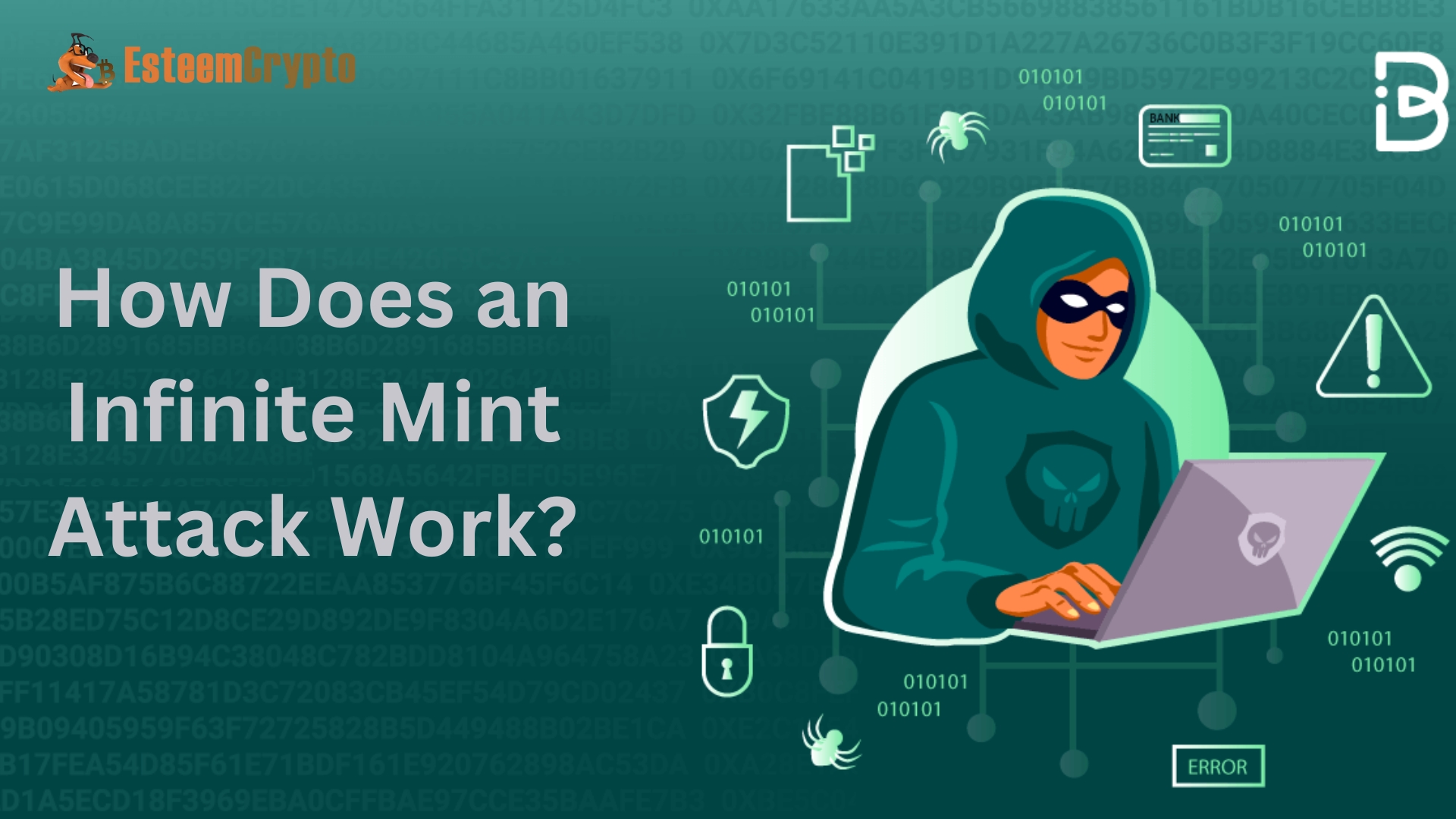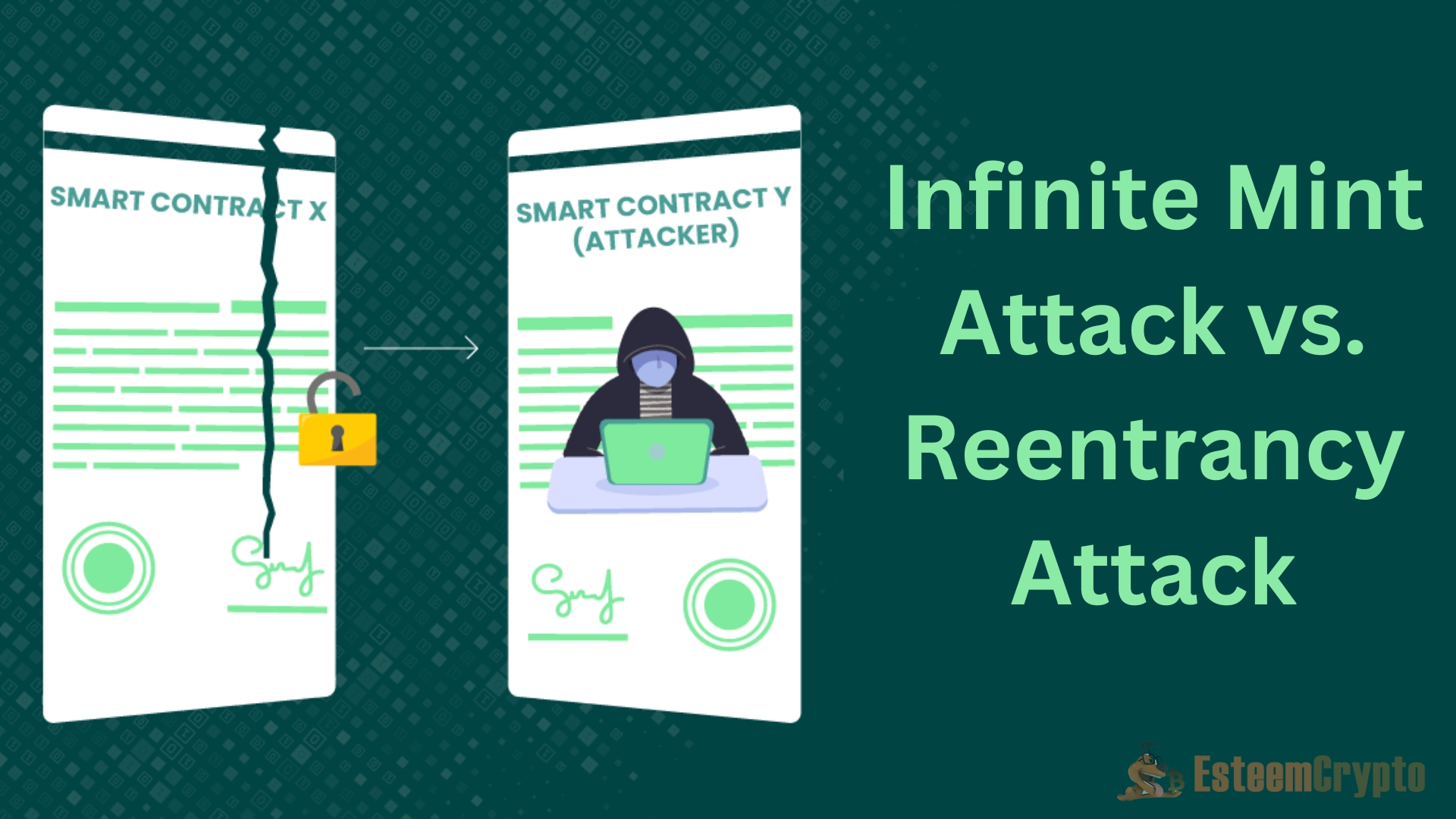Infinite Mint Attacks How Do They Work?

An attacker can launch an infinite mint attack by tampering with a contract code to create tokens at a rate higher than the approved supply limit. Protocols for decentralized financing (DeFi) are particularly vulnerable to this attack. By printing an endless supply of tokens or cryptocurrencies, the attack undermines their value and integrity.
Consider the $180 million loss and 85% decline in PAID’s value that resulted from a hacker using a flaw. The smart contracts of the Paid network to issue and burn tokens. In the time it took to halt the attack, more than 2.5 million PAID tokens were converted to Ether (ETH). Rumors of an inside coup were restarted when the network refunded users.
The perpetrator of such an assault may gain financial gain by selling. The illicitly generated tokens or by disrupting the normal operations of the impacted blockchain network. Conducting comprehensive code audits and including security safeguards during development are essential to safeguarding smart contracts from infinite mint attacks.
How does an infinite mint attack work?

An infinite mint attack looks for security holes in smart contracts, particularly those that deal with the minting of tokens and uses them to create endless tokens.
Vulnerability identification
Finding contract logical vulnerabilities, such as those about input validation or access control systems, is the approach used in the attack. The attacker finds the weakness and then uses it to their advantage by creating a transaction that mints fresh tokens without authorization or verification. It is possible to circumvent the intended constraints on creating tokens by taking advantage of this vulnerability.
Exploitation
The attacker creates a malicious transaction that triggers the vulnerability. Parameter changes, function execution, or making use of unexpected connections between code segments are all examples of what this could include.
Unlimited mining and token dumping
Thanks to the exploit, the attacker can issue more tokens than the protocol’s architecture anticipated. This token flood can reduce inflation, which is associated with it. The value of the coin leads to losses for users and investors. When an attacker quickly creates many tokens and sells them for stablecoins or other cryptocurrencies, this is called token dumping. This sudden and unexpected supply increase drastically reduces the initial token’s value, leading to a precipitous decline in its price. However, the attacker can profit from the market if they sell the inflated tokens quickly enough.
Consequences of an Infinite Mint Attack
In an infinite mint attack, the value of a token can plummet, money can be lost, and ecosystems can be disrupted. The devaluation of the asset and the subsequent massive losses suffered by users and investors are the direct outcomes of an infinite mint attack, which generates an unending supply of tokens or bitcoin. Since trust in the affected blockchain network and its associated decentralized applications is eroded, the ecosystem as a whole is put at risk. If the attacker sells the inflated tokens before the market reacts, they can profit while others hold worthless assets. If the attack triggers a liquidity crisis, investors might have difficulty selling their investments for a reasonable price.
When the Cover Protocol was attacked in December 2020, for example, the token’s value dropped from $700 to $5 in a few hours, and investors who had COVER tokens lost a lot of money. In all, the hackers created more than 40 quintillions of coins. When the value of a token drops, it can affect all parts of the ecosystem that depend on it, including exchanges, decentralized apps (DApps), and others. The project could face fines or other penalties due to legal concerns and regulatory scrutiny caused by the attack.
Infinite Mint Attack vs. Reentrancy Attack

While reentrancy attacks use withdrawal mechanisms to drain funds continuously, infinite mint attacks try to create an endless amount of tokens. By exploiting security holes in the token issuance process, an infinite mint attack can create an endless supply of tokens, causing their value to plummet and investors to lose money.
Conversely, reentrancy attacks target withdrawal, allowing attackers to continuously deplete a contract’s funds before updating its balances. Any attack can potentially cause catastrophic results but create effective countermeasures. It is crucial to comprehend the variations.
Crypto Infinite Mint Attack Prevention
By prioritizing security and implementing preventive measures, cryptocurrency projects can be safeguarded. The assets of their community members significantly lower the likelihood. That they will fall victim to an ongoing mint attack. To stop endless mint attacks, a cryptocurrency project needs a multi-pronged approach that prioritizes security throughout. Smart contracts must undergo regular and comprehensive audits by third-party security specialists. These audits thoroughly examine the code for vulnerabilities that could lead to the creation of endless funds.
Implementing substantial access restrictions, ensuring that minting powers are allowed only to authorized individuals, and utilizing multi-signature wallets for enhanced security are all necessary. Real-time monitoring tools can only achieve quick responses to potential assaults and detection. The unusual transaction patterns or sudden spikes in token supply.
Firm backup plans should also be prepared for projects so that they can swiftly address potential threats and limit damage. Open communication channels with community members, wallet providers, and exchanges are necessary to anticipate and prepare for any issues.




